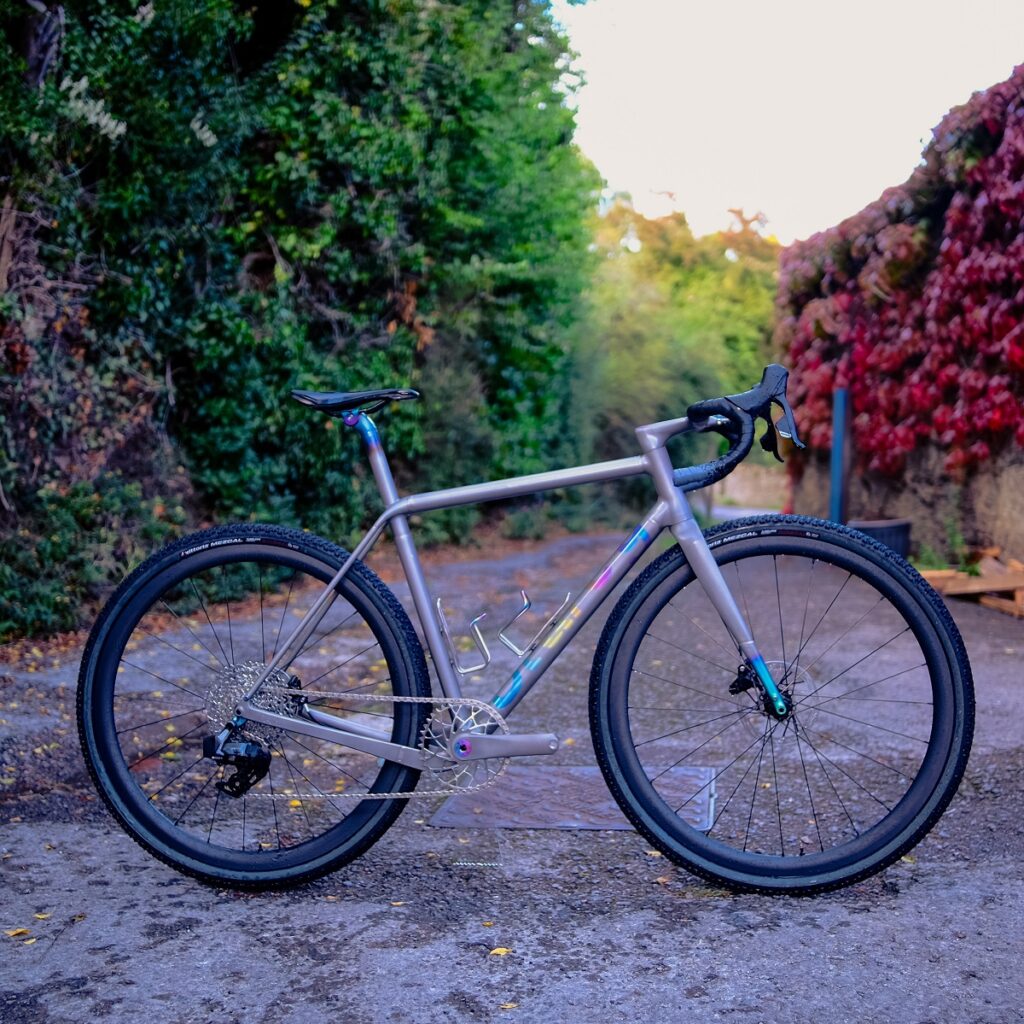We have been metal 3D printing bicycle componentry for the last eleven years. Currently we print for about fifteen world-wide bicycle companies, consisting of large and small businesses. They all have embraced this technology and are more than pleased with their lighter frames and components that don’t compromise on strength.
The parts we 3D print are for road, race, mountain and track cycles in all shapes and sizes. Initially we printed titanium junctions but are now printing framesets, forks, cranks, handlebars, handlebar extensions, sprockets and seat toppers.
On a yearly basis we print thousands of bike parts in a mix of titanium and stainless steel for a large number of bike manufacturers.
Bespoke bike companies
The cycling landscape is shifting with the surge of small, passionate businesses crafting bespoke 3D-printed bicycles. Often the bespoke small businesses consist of a handful of people (1-4), they have a passion for cycling and thrive on their specialised skills and craftsmanship, offering distinct value compared to mass-produced bikes. This expertise can be a powerful branding tool, attracting passionate cyclists seeking a personal touch.
Through innovative 3D printing techniques, smaller brands are revolutionizing bicycle design, crafting unique, high-performance bikes that perfectly match each rider’s individual needs.
Here are two bike companies that we work with who are actively incorporating additive manufacturing into their production processes, each with their own unique approach and area of expertise.
Sturdy Cycles and their bespoke 3D-printed bicycles
Specialises in made to measure titanium road, time trial and mountain bikes crafted with additive manufacturing. Pioneering metal 3D printing, Sturdy Cycles unlocks innovative designs and structures impossible with traditional manufacturing. Read more about Sturdy Cycles here


44 Bikes
Additive manufacturing has revolutionised the way 44 Bikes have designed and manufactured its high-performance bikes. We’ve been collaborating with Kris from 44 Bikes for a couple of years and have been printing components for his Research & Development (R&D) Snakedriver Mountain bike. Now on prototype 4 of the latest bike, having tried 3D printing in titanium and stainless steel 316L, Kris has decided to 3D print his parts in stainless steel 15-5ph and is getting closer to the final offering. To ensure consistent material strength, Kris chose us because we conduct tensile bar tests on every batch of printed parts. This allows us to document the actual tensile strengths achieved after printing.
In his own words, Kris says “RAM3D have been a joy to work with, they really know the 3D printing process inside and out and have a thoroughly dialed process along with providing tensile bar test results on request (they do this regardless with each batch of parts).”


What are the metals we 3D print for these bicycle companies?
Titanium is the top choice of metal for high-end frames and components. It boasts an exceptional strength-to-weight ratio, offering excellent fatigue resistance and provides a smooth, comfortable ride.
Stainless steel 15-5ph is an alternative metal, boasting high strength and moderate corrosion resistance.
The future looks bright for 3D-printed bicycles
Forget “just another tool”! While still evolving, metal 3D printing is revolutionizing manufacturing across industries. It’s a game-changer, unlocking unprecedented possibilities in design, production, and innovation.
Overall, the future of metal 3D printing in the bike industry looks bright. As technology advances and costs decrease, we can expect to see even more companies and riders embrace the benefits of 3D printed bikes.
